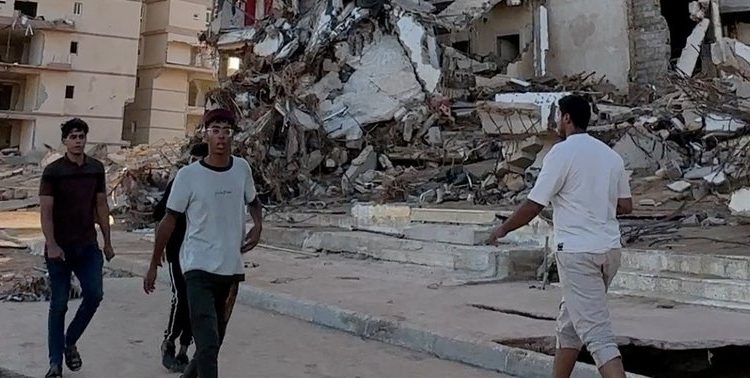Some 5,200 dead in Libya’s devastating floods – official
The death toll from devastating floods in Libya’s eastern city of Derna has reached about 5,200, a spokesman for the Interior Ministry of one of Libya’s rival governments said on Tuesday.
Rescue workers are still recovering the bodies of people killed in the floods, Tarek al-Kharraz, spokesman for the ministry in the eastern-based government, told dpa.
It was not possible to independently verify the figures.
According to the International Federation of Red Cross and Red Crescent Societies, about 10,000 people are missing.
Al-Kharraz also said that a quarter of Derna had been destroyed or washed into the sea. Derna was the city most severely affected by the floods triggered by powerful storm Daniel, which swept through eastern Libya from Sunday. Two dams collapsed in the city during the storm.
Two rival governments are vying for power in Libya, which has been plagued by unrest in recent years. One is based in the east and the other is based in the capital Tripoli, in the west. So far, diplomatic efforts to peacefully resolve the ongoing civil war have failed.
The United Nations-recognized government in Tripoli on Tuesday pledged millions in aid for areas ravaged by the storm, although it does not control the region in the east of the country.
The government led by Abdul Hamid Dbaiba will provide 2 billion Libyan dinars (about $410 million) in aid to finance the reconstruction of areas in eastern Libya badly damaged in the floods, according to Libyan news agency LANA.
The disaster areas in the east of the North African country are under the control of a rival government led by General Khalifa Haftar.
The storm system known as Daniel began bringing heavy rains to Libya on Sunday, leading to catastrophic flooding in eastern parts of the country.
More than 300 victims were buried in mass graves, the Libyan website Babwat al-Wasat reported on Tuesday.
“Initially, those identified were buried. Due to the power outage and the lack of places to store the bodies, the other bodies were buried after photographing them, in an attempt to identify them later,” Ahmed al-Hasadi, one of those who attended the burial ceremony, told dpa.
The storm swept through the entire so-called Green Mountain region and its largest cities, including Derna, Al-Bayda, Al-Marj, Shahat, and Sousse, in addition to villages and towns in the region.
The mayor of Shahat municipality, Hussein Boudarwisha, told dpa that “the torrents of rain flooded approximately 20,000 square kilometres in the region.”
According to Libyan experts, it was the worst natural disaster in the country since the Al-Marj earthquake in 1963.
The storm swept away people and cars, bringing down power poles and causing electricity outages.
Relief and rescue workers said that the massive damage caused by the violent storm has hampered relief efforts.
A spokesman for the emergency services, Osama Ali, said there is one road that still leads to the city of Derna, but “passing through is difficult and dangerous due to the cracks and damages left by the storm.”
He stressed that disruption to internet services had contributed to the difficulty of verifying the situation on the ground in Derna.

